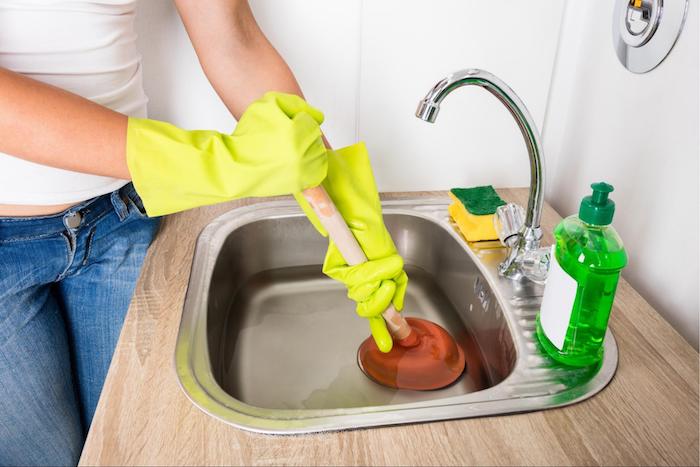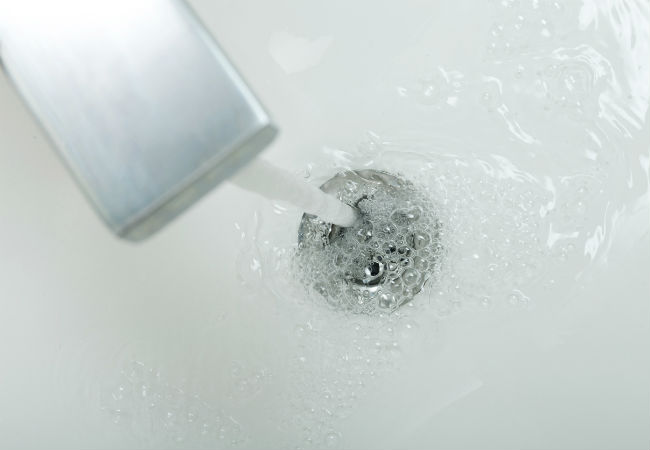Key Advice On How To Correct A Slow-Draining Sink
Key Advice On How To Correct A Slow-Draining Sink
Blog Article
How do you really feel in regards to Three Common Ways to Fix a Slow Drain?

Introduction
We've all been there: You're brushing your teeth or washing your hands, and you discover the water pooling in the sink. Instead of rapidly swirling down the drain, it lingers, transforming your once-refreshing early morning routine into a small overload scene. A slow-draining sink isn't simply annoying; it's often an indicator of bigger pipes concerns hiding below the surface area. The bright side is that a lot of slow-draining sinks can be fixed with a little know-how, a couple of basic tools, and some persistence. All set to tackle this task head-on? Allow's roll up our sleeves and dive right in.
Understanding the Reasons For a Slow-Draining Sink
Before you begin poking around in your pipelines, it helps to understand what might be creating the downturn. Understanding the origin makes it less complicated to pick the appropriate fix.
Usual Offenders Behind Slow Drain
So, what's obstructing things up? Generally, it's a blend of day-to-day particles-- assume hair, soap residue, tooth paste residue, and leftover food bits. In time, these little bits accumulate and hold on to the pipeline wall surfaces, gradually narrowing the passage and making it harder for water to travel through. In some cases, mineral deposits from hard water can also add to the crud, developing the best tornado for persistent clogs.
When is it Time to Take Action?
If you see the water draining slower than common, it's a great concept to step in sooner as opposed to later. Waiting also long might lead to finish blockages, undesirable odors, or perhaps pipe damages. If the water takes greater than a few secs to clean out after shutting off the tap, consider it a red flag and prepare to put on your DIY hat.
Devices and Products You'll Require
The right devices make all the difference. The good news is, you won't need a completely stocked plumbing's van to get the job done.
Crucial Tools for Do It Yourself Repairs
A plunger is your best starting point. A small, sink-sized plunger develops suction that can dislodge minor blockages. For even more consistent obstructions, a drainpipe serpent (occasionally called a plumbing's auger) works wonders. A set of handwear covers, a flashlight, and possibly a set of safety safety glasses are additionally helpful.
Advised Cleansing Solutions
Mild dish soap and hot water can assist break down greasy build-up. A mix of cooking soda and vinegar is a tried and true home remedy, and chemical cleaners provide a more eco-friendly strategy. Keep chemical drainpipe cleansers as a last resource, as they can be extreme on your pipelines.
Safety First: Safety Measures and Prep work
Prior to you launch into unclogging mode, consider safety and security. You're handling potentially filthy water and particles, so slip on a set of handwear covers. If you're making use of chemical cleansers, make certain the space is well-ventilated and comply with the directions on the label.
Safety Gear and Work Space Configuration
Lay down some old towels or dustcloths around the sink area to capture sprinkles. Clear away any type of products that might get in your way, like soap dispensers or toothbrush holders. Make sure you have good lighting-- get a flashlight if needed.
Step-by-Step Overview to Taking Care Of a Slow-Draining Sink
Now, allow's enter into the nitty-gritty. This detailed process will certainly assist you via easy strategies to restore your sink's drain.
Step 1: Eliminate and Tidy the Stopper
Typically, the stopper (that small plug you push down to block water) is the initial perpetrator. Remove it very carefully and wipe any type of hair or crud trapped around its base. Rinse it thoroughly prior to placing it back in place.
Step 2: Use a Bettor to Dislodge Debris
Got that plunger prepared? Setting it over the drainpipe and offer it a couple of company pumps. The concept is to produce suction that can loosen any clog. If you see littles particles floating up, you're on the right track.
Action 3: Attempt a Drainpipe Serpent or Wire Wall Mount
If the bettor doesn't suffice, it's time to highlight the drainpipe snake. Delicately feed it into the drainpipe and twist as you go. You might really feel some resistance-- that's most likely the clog. Maintain twisting and pulling up until you get rid of the obstruction. If you don't have a drain serpent, a corrected the alignment of cord wall mount can operate in a pinch.
Tip 4: Use a Do It Yourself Drainpipe Cleaner
An all-natural cleaner made from baking soft drink and vinegar can break down residual grime. Put half a mug of baking soft drink into the drain, adhered to by half a mug of vinegar. Let it fizz for about 15 mins, after that flush with hot water. This chemical reaction commonly does marvels for small blockages.
Tip 5: Rebuild and Examine the Sink
Placed everything back with each other and run the faucet. Does the water currently swirl away at a respectable rate? If yes, give yourself a pat on the back. If not, do not misery-- there are still a couple of even more tricks up your sleeve.
Alternate Approaches for Stubborn Clogs
Not all blockages are developed equivalent. If your sink still declines to work together, take into consideration these different remedies.
Baking Soda and Vinegar Method
We currently discussed this, but it deserves noting once more. This gentle, environment-friendly method is much safer than chemical cleaners and usually rather effective.
Chemical Drain Cleansers
Enzyme-based cleansers use all-natural bacteria to digest raw material. They're an excellent option if you're looking to prevent harsh chemicals. Just keep in mind, they may take a bit longer to work their magic.
Chemical Drainpipe Cleansers: Benefits And Drawbacks
Chemical cleansers can blow up with hard obstructions quickly, but they're not without downsides. They can create warmth and fumes, damage pipes if utilized exceedingly, and pose ecological risks. Use them sparingly, and always comply with the instructions very carefully.
Safety Nets to Keep Your Sink Flowing
Prevention is the most effective treatment. By embracing a couple of basic practices, you can maintain your sink from decreasing in the first place.
Regular Cleaning Behaviors
Wipe down the sink basin and fixture area frequently. Get rid of hair or food particles prior to they have an opportunity to wash down the drain.
Preventing Unsafe Materials Away
Think twice prior to discarding coffee grounds, oil, or fibrous vegetable scraps down the sink. These perpetrators cling to pipeline walls, developing blockages with time.
Routine Upkeep Checks
Schedule a fast regular monthly examination. Run hot water through the sink for a couple of minutes, taking notice of the flow. If it appears slow-moving, act fast before it comes to be a full-on clog.
When to Call an Expert Plumber
In some cases, regardless of just how difficult you try, that obstruct simply won't move. That's when it's time to generate the pros.
Indicators That Show an Extra Major Issue
If your sink drains slowly despite several attempts, or if you notice water backing up in various other components (like your shower or commode), you may have an extra severe plumbing issue prowling much deeper in the system.
Balancing Do It Yourself Initiatives with Expert Aid
While do it yourself can save you money and offer a feeling of success, there's no embarassment in calling an expert. A specialist plumbing professional can analyze your entire plumbing arrangement, making sure there's no underlying damage or long-lasting trouble that can cost you extra down the road.
Comparing Expenses and Long-Term Solutions
Before making a decision, take into consideration the big picture. An inexpensive, quick fix could fix the problem temporarily, but purchasing a much more irreversible solution could conserve you cash and stress and anxiety in the future.
Evaluating the Expenditures of DIY vs. Professional Solutions
DIY solutions usually cost little bit more than the rate of a plunger or a container of baking soft drink. Expert solutions, on the other hand, come with a cost but may avoid repetitive issues and expensive fixings later on.
Investing in High Quality Fixtures and Upgrades
If your sink's style adds to regular obstructions, it could be worth upgrading to higher-quality fixtures or changing the pipes format. Consider this an investment in your house's performance and convenience.
Conclusion
A slow-draining sink can seem like a small irritability, but it's often an indication that your plumbing requires a little tender loving care. By recognizing the origin, employing the right tools and techniques, and committing to simple safety nets, you can maintain your sink flowing easily. And when all else stops working, never wait to call a specialist-- your home's plumbing deserves the investment in treatment and maintenance.
Three Common Ways to Fix a Slow Drain
Baking Soda Method
Boil a full pot of water. Measure out cup of baking soda and pour it down the drain. Then take cup of the magical cleansing substance known as white vinegar and drop that down there too. Allow the mixture to fizz in the drain for five minutes as the vinegar and baking soda combine. Now dump in that whole pot of boiling water. This combination of cleaning substances should clear out anything that is causing your sink to drain slowly. If it doesn t...
Zip-It
If the baking soda method doesn t clear out your drain, it may be because a significant amount of hair and/or other debris has collected there and you need to remove it. Purchase a Zip-It tool at any home improvement or hardware store and insert it into your drain. It will catch any collected hair or debris that s blocking the flow of water. Pull it out. If it s got a big clump of hair, etc. on the end, you ve probably got your culprit.
Drain Cleaner
If these methods don t work, there is the standard drain cleaner that you can also buy in a hardware store or even your local grocery store. It s better if you can use a household solution, but these drain cleaners often work in a pinch. They re very simple to use. You generally just dump them in your drain and wait. If even this method is not effective, it may be time to call the plumber.
https://www.mrrooter.com/oneida/about-us/blog/2017/july/three-common-ways-to-fix-a-slow-drain/

Do you like reading about Solved! How to Fix a Slow Sink Drain? Place a review below. We'd be glad to hear your views about this piece. Hoping that you come back again in the near future. Are you aware of anybody else who is in to the subject? Why not promote it. Kudos for your time. Kindly check our website back soon.
Call Today Report this page